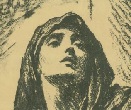
-
1. The poem was also dedicated to Rosalind Black (wife of journalist George Black), who had also died, comparatively young, in October 1917: she was best known for philanthropic and aid work, especially with mothers and children in hospitals and, after the outbreak of war, with the Red Cross. (Return to essay)
2. A similar comment, credited to ‘an enthusiastic reader of her books’, appears in the New Zealand Sun’s obituary of 3 November 1917 (p.10). The anecdote is also repeated in the Australian Dictionary of Biography. (Return to essay)
3. The children were Lilian Sophia Locke (1869-1950); Agnes Emily Locke (‘Nana’) (1871-1954); Annie Maria Locke (1872-?); Mary Locke (1874-?); Georgina Jane Locke (1875-1876); Margaret Paulina Locke (1876-1876); William Frederic (‘Fred’) Locke (1877-1936); Jessie Locke (1879-1929); Helena Sumner Locke (1881-1917); Bessie Locke (1883-1883); Hannah Blanche de Montmorency Locke (‘Blanche’) (1886-?). Lilian and Jessie would later go to court over the custody of Sumner Locke Elliott, who depicts them as Lila and Vanessa in Careful, He Might Hear You. (Return to essay)
4. For more information on Lilian Locke, see Betty Searle’s Silk & Calico: Class, Gender & the Vote (Sydney: Hale & Iremonger, 1988). (Return to essay)
5. Her recitiation of “Lasca” at this concert attracted some criticism: “At present one of the faults of her youth is the commonest youthful fault of all — indiscretion. As an instance of this, last night she recited “Lasca.” It is a difficult thing to recite; and it is quite unsuited, anyhow, for recitation by a young girl. “Lasca” purports to be a world-weary man’s reminiscent soliloquy concerning a lost, light love. It is strong stuff, of quite unmodest virility all apulse; and the curious verse structure calls for delicate handling apart from that” (‘The Civic Concert’, p.2). It is possible that Locke saw this note, since she stuck to Australian recitations (largely Banjo Paterson) for her other Tasmanian concerts. At her final concert, she was called on for three light, humorous encores, and the same newspaper noted approvingly, “so it is done to the girl who has a pretty face!” (‘Civic Concert at the Town Hall’, p.3). (Return to essay)
6. It is unlikely to be a coincidence that in Careful, He Might Hear You, when Logan Marriott remembers lying in bed with his new wife and discussing her pregnancy, she says of her son that “he’s just like you, darling, a blue-sky gentleman like you” (p.287). (Return to essay)
7. Alek Sass (sometimes given as Alec), painter and cartoonist, lived and worked in New York between 1912 and 1918, where he produced magazine art and film posters. He had been resident in London from 1911, and had perhaps met Locke there. He later returned to Australia. Louis Esson, a prolific author of short stories, plays, and poetry, had arrived in New York in 1916, accompanied by his second wife. Harry Julius was also a cartoonist and artist, who had illustrated Steele Rudd stories, among other works. ‘Douglas’ was the former editor of the Sunday Times, to which Locke had contributed fiction. (Return to essay)
You might be interested in...




